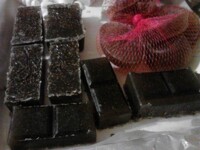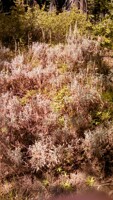
Why is Chinese Red Sage called red? Its red roots are a source of important medicine in the Chinese tradition. The flowers are actually a lovely lavender blue. In stress, the foliage can turn red, though. I thought it was funny that it actually can be red in some unexpected way.
Salvia miltiorrhiza prefers dappled shade and temperate humidity. It lasted two or three years in my hot garden, growing in water, but never got too big. I think it's a great ornamental if you have the right conditions!
Salvia miltiorrhiza prefers dappled shade and temperate humidity. It lasted two or three years in my hot garden, growing in water, but never got too big. I think it's a great ornamental if you have the right conditions!
Category Photography / Scenery
Species Unspecified / Any
Size 1280 x 720px
File Size 169.3 kB
Listed in Folders
This species is cultivated in Korea, but only for medicinal purpose and almost never as an ornamental plant. If a more compact form is found, I think it might be able to be used instead of Salvia pratensis, which often becomes unsightly or fails to survive under Korean summer, as a border perennial.
By the way, Chinese (and Korean) name for Scutellaria baicalensis, 黃芩 (Huang Qin, meaning golden wort), also refers to the color of its roots (to be exact, the color of their cross section), which is used as medicine as well.
By the way, Chinese (and Korean) name for Scutellaria baicalensis, 黃芩 (Huang Qin, meaning golden wort), also refers to the color of its roots (to be exact, the color of their cross section), which is used as medicine as well.

 FA+
FA+









Comments